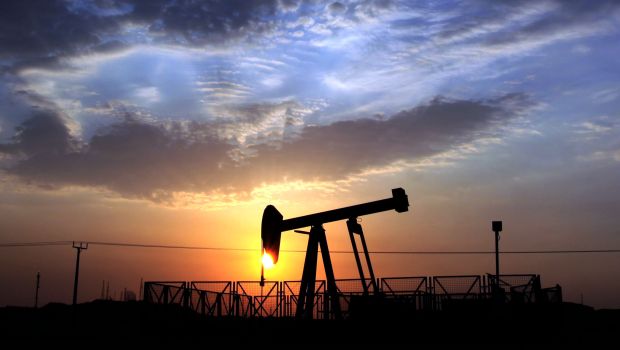
File photo—An oil pump operates in the desert oil fields of Sakhir, Bahrain, at sunset on October 29, 2012. (AP Photo/Hasan Jamali)
Saudi Arabia’s gross domestic product is expected to expand 4.2 percent in 2014 and 4.3 percent in 2015, after slowing to a four-year low of 3.8 percent last year, predicted the poll of 17 analysts, conducted this month.
“GCC (Gulf Cooperation Council) growth prospects remain favourable, supported by high oil prices, a steady flow of government spending and in some cases an increasingly buoyant private sector,” said Daniel Kaye, head of macroeconomic research at National Bank of Kuwait.
In the United Arab Emirates, the second largest Arab economy, gross domestic product growth is seen holding steady at 4.3 percent in 2013-2015, a tad below 4.4 percent in 2012.
Analysts raised their 2014 UAE growth forecast markedly from 3.6 percent in the previous Reuters poll, conducted in September, because of a strong revival in Dubai’s property sector and the boost to investor confidence after the emirate in November won the right to host the Expo 2020 world’s fair.
“Indeed, the challenge for the UAE now is not how to stimulate growth, but how to manage its pace, and avoid the pitfalls that led to the crisis of 2008,” HSBC’s regional economists Simon Williams and Liz Martins wrote in a note.
Fellow OPEC member Qatar is expected to keep outperforming the other five GCC states with 5.5 percent growth in 2014 and 6.0 percent in 2015, as construction linked to the 2022 soccer World Cup tournament picks up after a slow start.
However, the increased activity may also propel Qatar to the top of the Gulf inflation rankings, with consumer price growth seen averaging 3.9 percent this year and 4.2 percent in 2015, the highest rates since a record 15 percent in 2008.
Overall, price pressures are seen edging up gradually across the Gulf in the next two years, although forecasts for 2014 were reduced for most countries compared to September’s poll.
With the exception of deficit-ridden Bahrain, public finances in the Gulf Arab welfare states are expected to remain sound enough for governments to raise spending if needed to support economic growth.
But heavy fiscal spending, which has been powering the Gulf’s economic boom over the past two decades, is now likely to grow at a much slower pace than before, as an expected decline in oil receipts prompts more for spending restraint.
Saudi Arabia, Kuwait and Oman have since last month released budget plans suggesting much slower growth of expenditure.
Riyadh’s 2014 budget plan sees a rise of just 4 percent compared to the original 2013 budget, the slowest rate since 2003.
“With the expansionary spending policies implemented over the last few years…the oil exporters will start to see surpluses shrink, if not turn to deficit, over the second half of the decade,” the HSBC economists said.
“Any drop in oil prices on the back of, for example, an Iran deal, would accelerate this process,” they said.
Iran aims this year to seal a final deal on its nuclear program with major powers to end sanctions that hurt its economy; a deal could permit it to resume selling oil freely in the global market.
Crude oil prices, now around 108 US dollars per barrel, are forecast to ease gradually to 103 dollars in 2014 and $100 in 2015, as a shale boom in the United States and increasing output in Iraq keeps the market well supplied, a separate Reuters survey found last month.
As a result, Saudi hydrocarbon export revenues may slip as far as a median 290.4 billion dollars in 2015 from 297.3 billion dollars this year and 317.4 billion dollars in 2013, this month’s poll showed.
That would push the desert kingdom’s fiscal surplus as low as 3.5 percent of GDP in 2015, from 5.0 percent in 2014 and an officially reported 7.4 percent last year.
